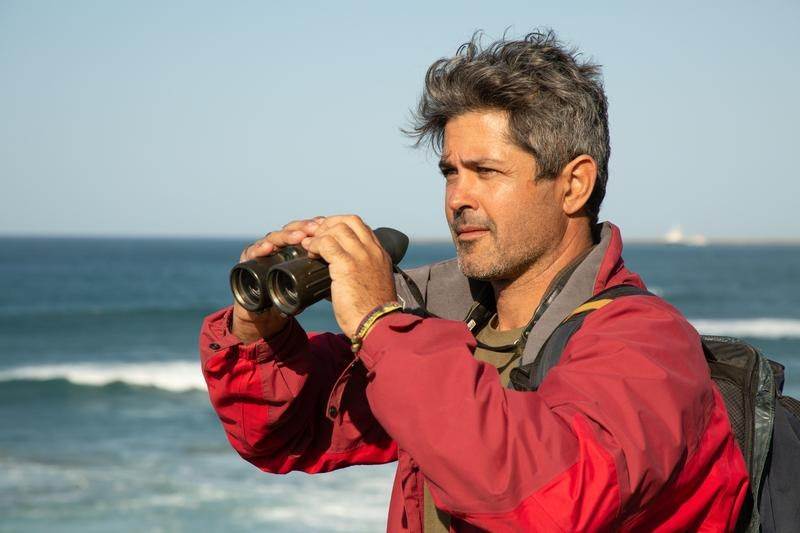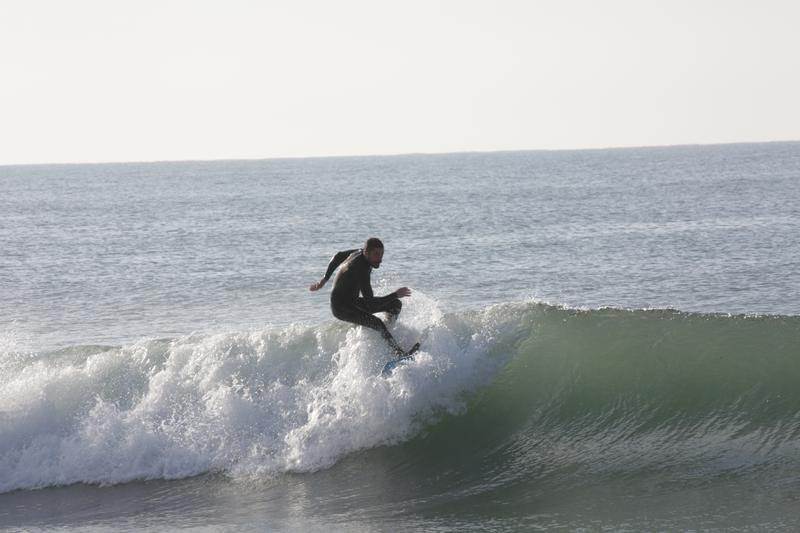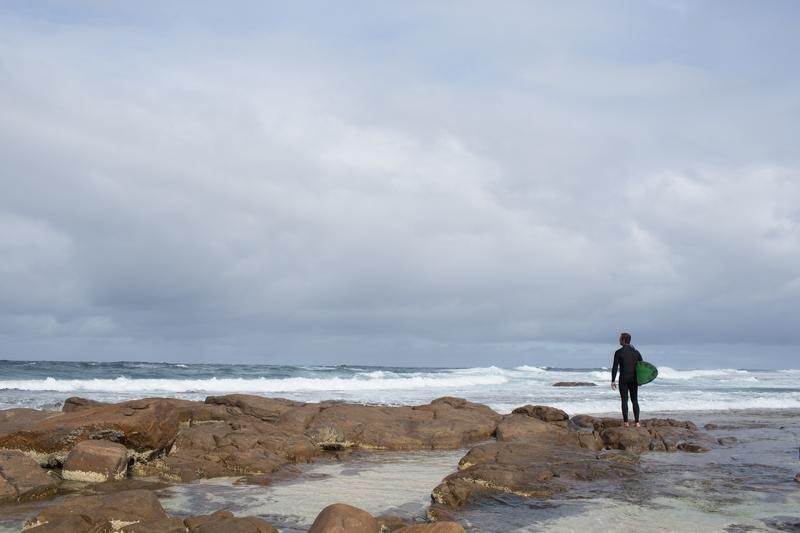Shark Experts Share How To Avoid Shark Bites Ahead of SharkFest Special ‘Shark Vs. Surfer”
There are a lot of National Geographic SharkFest specials that may make viewers wary of swimming in the ocean again. One of them is Shark vs. Surfer, an hour-long special that premieres Sunday, August 2nd, at 8:00 pm on National Geographic. I had the chance to speak to two of the experts involved with this special who were able to calm some of my concerns, and hopefully yours, too!
“We can really mitigate the chance of shark attacks by understanding their ecology,” Ryan Johnson of the Blue Wilderness Research Unit explained. “Biology itself is a study of variations, you get very clear patterns in shark biology and in shark behavior and migration. The ecology of sharks is which sharks are in certain areas, when they’re in certain areas what to look out for because in every situation there are slight differences. In South Africa we know bull sharks, for instance, come down to South Africa to feed in the river mouths over the winter months so you do not want to swim in those dirty muddy river mouths during November, December time. And I’m sure in the states it’s just the same, there are certain distinct patterns that can be communicated from authorities, from scientists to help educate swimmers. The other one is watching out for other animals at sea. Bait fish, diving gulls, dolphins, all of these are signs of life in the water and usually if there’s a lot of life in the water, you’re going to have a lot of sharks.”
“If you have baitfish, you probably have something feeding off them,” Dr. Stephen Kajiura, Florida Atlantic University Professor of Biological Sciences, added. “Here in Florida, we have shoreline fisherman, they’re fishing right off the beach and they’re fishing for sharks and tarpins. They’re trying to catch these big predators and if you see someone fishing and there’s baitfish in the water, go swim somewhere else. Exercise common sense. Go somewhere where you’ve got nice, clear water, you’ve got a lifeguard present, and you’ve got the ability to make sure that you don’t become mistaken for a prey item by these different sharks.”
Another important thing to consider is what a shark sees. They see in black and white and use scent and vision to find prey. Sharks typically attack humans by mistake in conditions where their visibility is hindered and they mistake a person or a part of their body for something they typically feed on. Since Shark vs. Surfer deals specifically with being on a board, Dr. Stephen Kajiura was able to talk about what sharks might thing when they see a surfer. “If you’re talking bigger sharks, like white sharks, they’re eating marine mammals. They’re eating sea lions, seals, big things like that. So at that point, the whole [surf] board could very much look like a seal, especially when you have the surfers arms and legs dangling off the side, it could very much look like flippers. So with this shape and the size, it could look like the sort of things that these sharks would come up and eat. In terms of visual acuity, it might be that these sharks… are having a difficult time making out sufficiently clear definitions to say that’s a surfboard vs. that’s a seal. And so it could be that they could be saying that’s generally the same size and shape as my prey item and they’re charging up towards it. Now, even if they determine I’ve made a mistake, it’s too late. You’ve got a ton or more of white shark charging this board from underneath. Even if it realizes that’s not a prey item, it’s not going to be able to stop and that’s how you can get these massive bites on people on boards.”
Ryan Johnson added more details about how time of day and lighting conditions can come into play and some research that’s being done in South Africa. “I think light level and visibility play a big role in these sharks being able to discern between a surfboard and a seal. I do a lot of work with trying to elicit breaches and then you use a big seal, a small seal, even different colors, etc. In the last year I’ve been putting cameras underwater filming that. One thing I’ve been noticing recently is that once you’ve got an animal charging up from the bottom, I feel they’re taking in information the whole time. What I've noticed is that when light levels are coming up, particularly later in the morning, there have been sharks aborting very often when they work out the seal decoy is in fact not what they thought it was, which is a seal. You see them leap out of the water but actually their mouth underwater is closed and they sort of miss it. I think for humans we have to be aware that visibility plays a big role, light levels play a big role, because when their visual senses are reduced because of poor visibility, then I think the chances of mistakes are a lot higher.”
A popular misconception that Dr. Stephen Kajiura helped clear up the fact that sharks can’t sense a human’s heartbeat in the water. Humans emit a very low electric charge in the water because our skin is water tight, unlike a fish with gills that constantly releases ions that can be sensed by sharks in close proximity. “The only time you would do that is if you went under water and opened your mouth to expose your soft mucus membranes to the water,” Dr. Stephen shared. “If you did that, I could measure the electric field around your head. But for the most part, we’re not leaking ions like a little bait fish, so we’re not producing a large electric stimulus. And in terms of heartbeat, this is something that I really need to get straightened out in these documentaries. They don’t really detect heartbeats. Heartbeats are relatively high frequency transelectric stimulus and it’s outside the range of what the electroreceptors are able to detect. The electroreceptors, known as the ampullae lorenzini, and these electroreceptors are good at detecting stimuli less than about 8hz, less than about 8 cycles per second. A heartbeat in comparison is very fast, it’s a high frequency electrical pulse. They’re simply not able to detect a heartbeat in the same way that they’re able to detect ions leaking around a fish that’s breathing in water.”
Shark attacks on humans are a very rare occurrence to begin with, but beachgoers can feel comfortable by being smart about when to go in the ocean. You don’t want to swim in murky or cloudy waters where visibility is reduced and you don’t want to swim before the sun has fully risen or after the sun is beginning to set. If you see a lot of fish in the water, especially if larger animals show up to feed off them, it’s not a good idea to be in the water at that time. And lastly, it’s probably not a great idea to swim in the ocean while bleeding because sharks could confuse the scent of your blood for something they like to eat. Beachgoers can also rest easy knowing that scientists have been researching ways to help deter sharks from popular beaches.
“We get quite a lot of inventors and innovators approaching us to test their equipment, test their inventions,” shared Ryan Johnson. “I can’t give away their proprietary information too much, but it’s fascinating that so many very smart people around the world are coming up with inventions that are designed to help sharks and humans to coexist safely rather than the archaic version of let’s take sharks out of the ecosystem by using shark nets, which is a shark fishing device. Off the top, we’ve been testing things like patterns of water, color shapes, we’ve been testing light, we’ve been testing sound, and a lot of different tests. Some that have been effective, naturally, some that haven't been effective. But I think what’s important is that the inventors and scientists that are coming up with these ideas are actually going about it the right way which is to try and put these technologies through rigorous scientific testing before bringing them to market because you’re not making a claim that you’re going to cure boredness, you’re making a claim that you’re going to keep somebody in the water safe from a shark and I think that’s really important. You’ve got to back that up with good science.”
You can enjoy SharkFest specials on National Geographic through August 6th and the fun continues on Nat Geo WILD! on August 9th.
Click here for the full SharkFest programming schedule.



